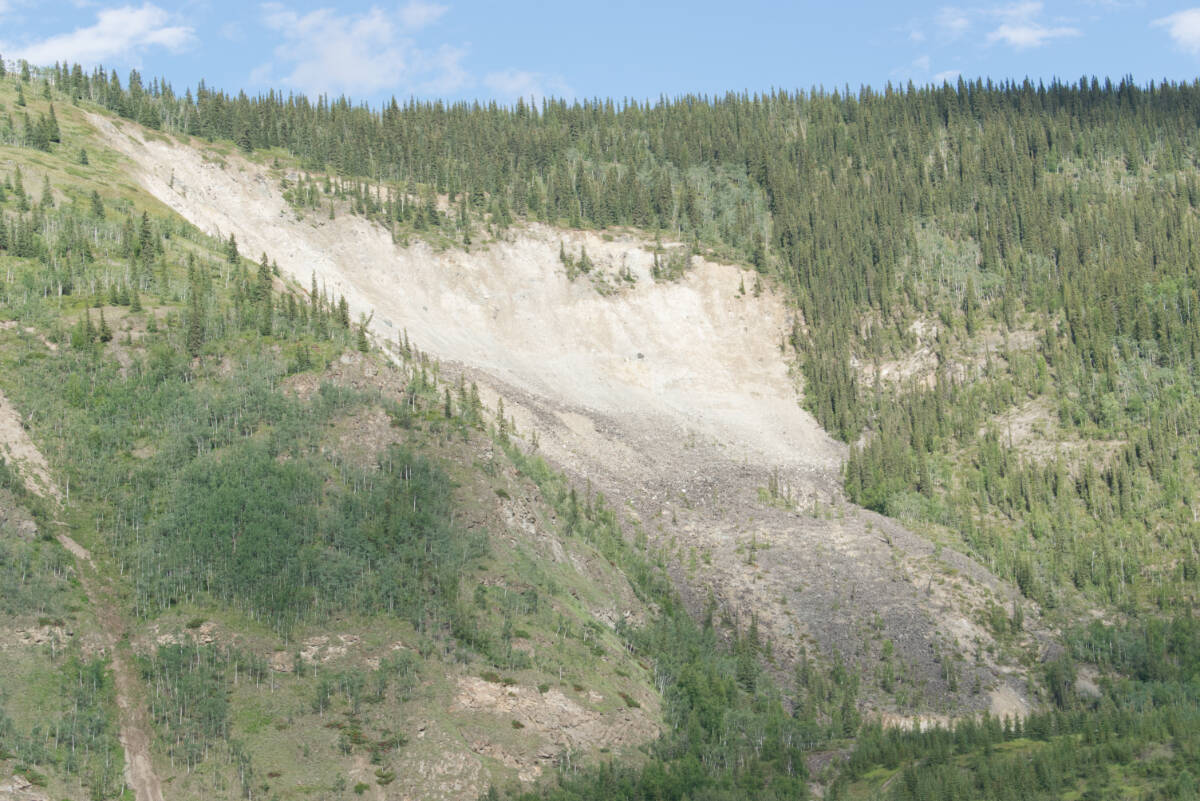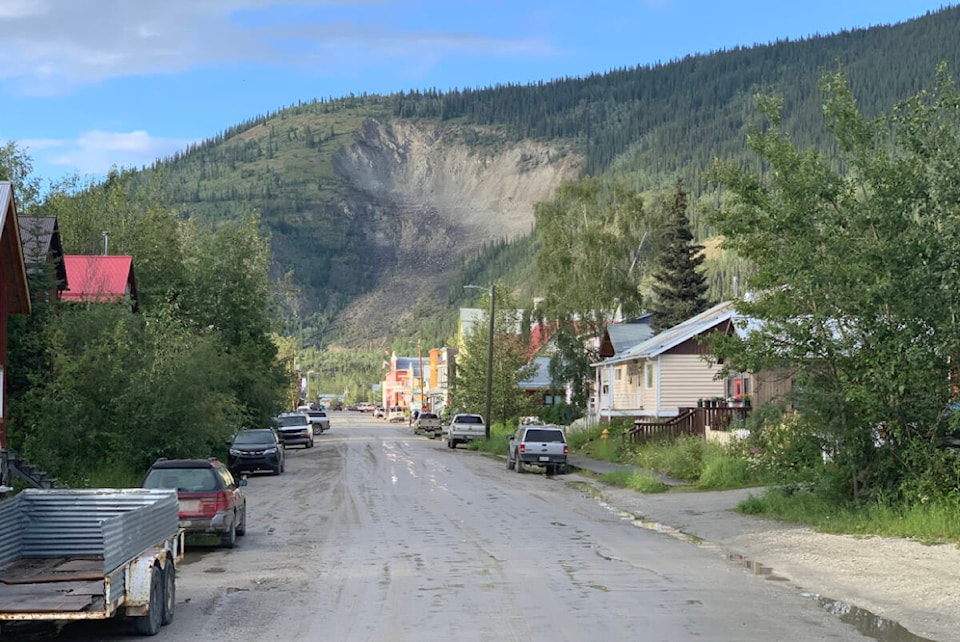The Yukon’s first early warning system of its kind is being set up to watch the Moosehide Slide for extraordinary activity that could have catastrophic impacts on Dawson City.
Jeff Bond is the head of surficial geology with the Yukon Geological Survey. He said the purpose of the new near-real-time monitoring gear is to act as part of a warning system that triggers a human response in case the slide was to “fail catastrophically.”
“The important initial step is to understand what’s normal movement, so that we can understand abnormal movement.”
Bond explained that there are typically some pieces of bedrock that are detached from the head scarp of the landslide, and those rocks are “slowly creeping down the slope” at approximately four to 12 centimetres per year.
He said his team wants to understand the mechanics of the land and the loose bedrock in order to determine if there is an increase or acceleration in that movement so they can activate an emergency response plan and alert the community as needed.
Bond said it remains uncertain exactly when the prehistoric landslide took place, aside from traditional knowledge and stories about the initial event. In 2008, he said stakes were put into the ground to understand the slide’s movement.
Bond acknowledged that “it’s impossible to have a 100-per-cent perfect system.” The latest approach will provide an almost live feed from the top of the landslide to a base station in Dawson City to track how much movement is occurring and at what rate.

Bond said the activity is measured in three ways.
The first thing is detailed GPS monuments to understand the amount of shifting. The second thing is two posts installed on stable and unstable ground with a cable stretched between them on a roller that will unravel as unstable ground creeps down the slope to measure the distance of the sliding. The third thing is a tilt meter placed on trees to look for rotation of the mass of rock that would send the device out of its vertical position.
“All three of these things will be acting as, essentially, a warning system,” Bond said.
He said the Frank Slide, which is known as Canada’s deadliest rockslide, in Alberta has been using similar instruments for monitoring activity.
Bond said the tools are new to the territory and could be used as part of early warning systems on other slides in the future.
“Unusual movements will initiate an emergency response plan designed to alert residents and evacuate if needed,” officials with Dawson City said in an email update on Aug. 25.
In the update, the Yukon government has hired BGC Engineering to install the equipment, starting Aug. 26, as part of a working group involving the City of Dawson and Tr’ondëk Hwëch’in First Nation.
The update indicates the money for the project comes from the federal government’s $25 million pocket of funding to address climate change in the Yukon.
The equipment is expected to start monitoring the ground in September.
Contact Dana Hatherly at dana.hatherly@yukon-news.com
